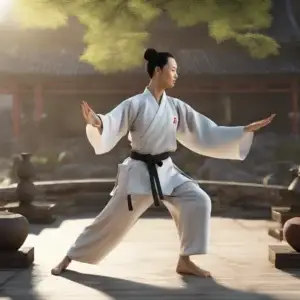
As discussed earlier, we know Tai Chi has its roots in Chinese martial arts, and it involves slow and flowing movements. Coupled with slow breathing to control that movement, it forms a unique meditative exercise routine.
It has been found to have numerous physical and mental health benefits. In particular improved balance and flexibility. We touched on this briefly in the previous article. Other points in that same article will follow in other posts.
In a little more detailed discussion, we examine the points of interest for us as practitioners.
Balance: Tai Chi requires practitioners to shift their weight from one leg to the other and maintain their centre of gravity. This strengthens the muscles in the legs and core and improves overall balance. The slow and controlled movements of Tai Chi also help to improve proprioception (the sense of where your body is in space), which is essential for balance.
Flexibility: The slow and gentle movements of Tai Chi help to stretch and mobilize the muscles and joints in the body, promoting greater flexibility. Practising Tai Chi regularly can also help to reduce muscle tension and stiffness, making it easier to move with greater ease and comfort.
In addition to improving balance and flexibility, Tai Chi has been found to have numerous other health benefits, including reduced stress and anxiety, improved cardiovascular health, and enhanced immune function. It can be practised by people of all ages and fitness levels, making it a highly accessible form of exercise.






